Family: Orussidae
Family common name: parasitic woodwasps
Subfamily: Ophrynopinae
Genus: Ophrynon Middlekauff, 1983
Subgenera: none
The Orussidae are small, predominantly black sawflies with cylindrical bodies and globular heads (Eaton and Kaufman 2007Eaton and Kaufman 2007:
Eaton ER and Kaufman K. 2007. Kaufman Field Guide to Insects of North America (Kaufman Field Guides). Houghton Mifflin Harcourt. 391 pp.). They are distinctive because they are the only sawfly family that is parasitic instead of phytophagousphytophagous:
feeding on plants
(Furniss and Carolin 1977Furniss and Carolin 1977:
Furniss RL and Carolin VM. 1977. Western forest insects. United States Deptartment of Agriculture Forest Service Miscellaneous Publication 1339: 1-655.). Current Hymenoptera phylogenies suggest that the Orussidae are the most closely related extantextant:
in existence; opposite of extinct
sawfly family to the suborder Apocrita, and specifically parasitic wasps (Vilhelmsen 2004Vilhelmsen 2004:
Vilhelmsen L. 2004. The old wasp and the tree: fossils, phylogeny, and biogeography in the Orussidae (Insecta, Hymenoptera). Biological Journal of the Linnaen Society 82: 139-160.).
Ophrynon are 8–14 mm in length (Furniss and Carolin 1977Furniss and Carolin 1977:
Furniss RL and Carolin VM. 1977. Western forest insects. United States Deptartment of Agriculture Forest Service Miscellaneous Publication 1339: 1-655.). They share several remarkable morphological characters with other Orussidae, including antennal insertions located extremely low on the face, reduced wing venationvenation:
the network of veins on a wing
, and a relatively long and thin ovipositorovipositor:
the female organ that deposits eggs and is used to drill into plant tissue, located at the apex of the abdomen, made up of the lance and lancet
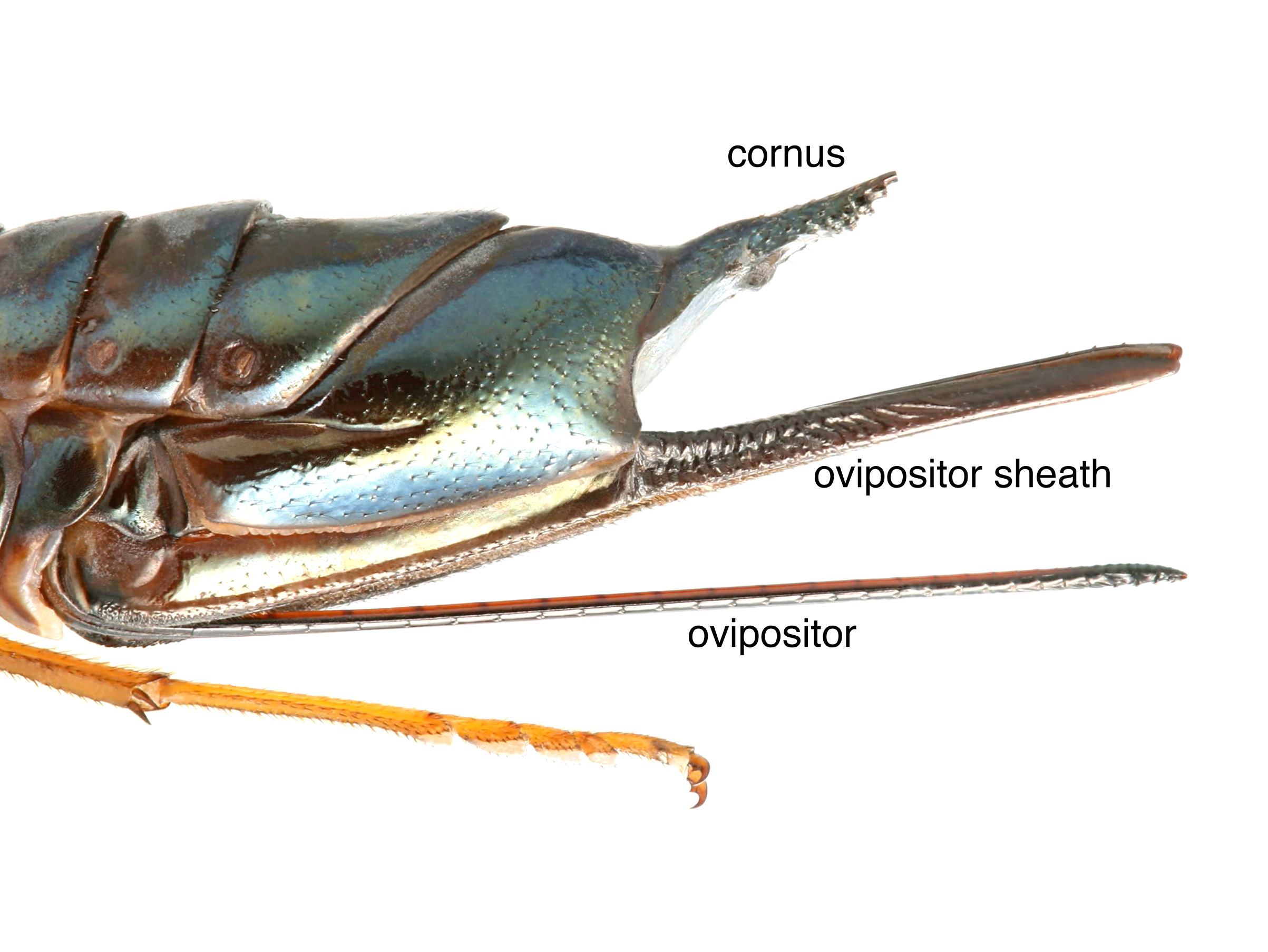 (Vilhelmsen et al. 2014Vilhelmsen et al. 2014:
(Vilhelmsen et al. 2014Vilhelmsen et al. 2014:
Vilhelmsen L, Blank SM, Liu Z, and Smith DR. 2014. Discovery of a new species confirms Oriental origin of Orussus Latrielle (Hymenoptera: Orussidae). Insect Systematics and Evolution 45: 51-91. https://doi.org/10.1163/1876312X-00002087). This genus is extremely rare in collections and poorly known (Blank et al. 2010bBlank et al. 2010b:
Blank SM, Vilhelmsen L, and Smith DR. 2010b. Ophrynon (Hymenoptera: Orussidae) in California: diversity, distribution, and phylogeny. Insect Systematics amp; Evolution 41: 3-27. https://doi.org/10.1163/139956009X12550095535756).
There are only four described species worldwide. All four are NearcticNearctic:
describing the region of the Northern Hemisphere that includes North America south through northern Mexico
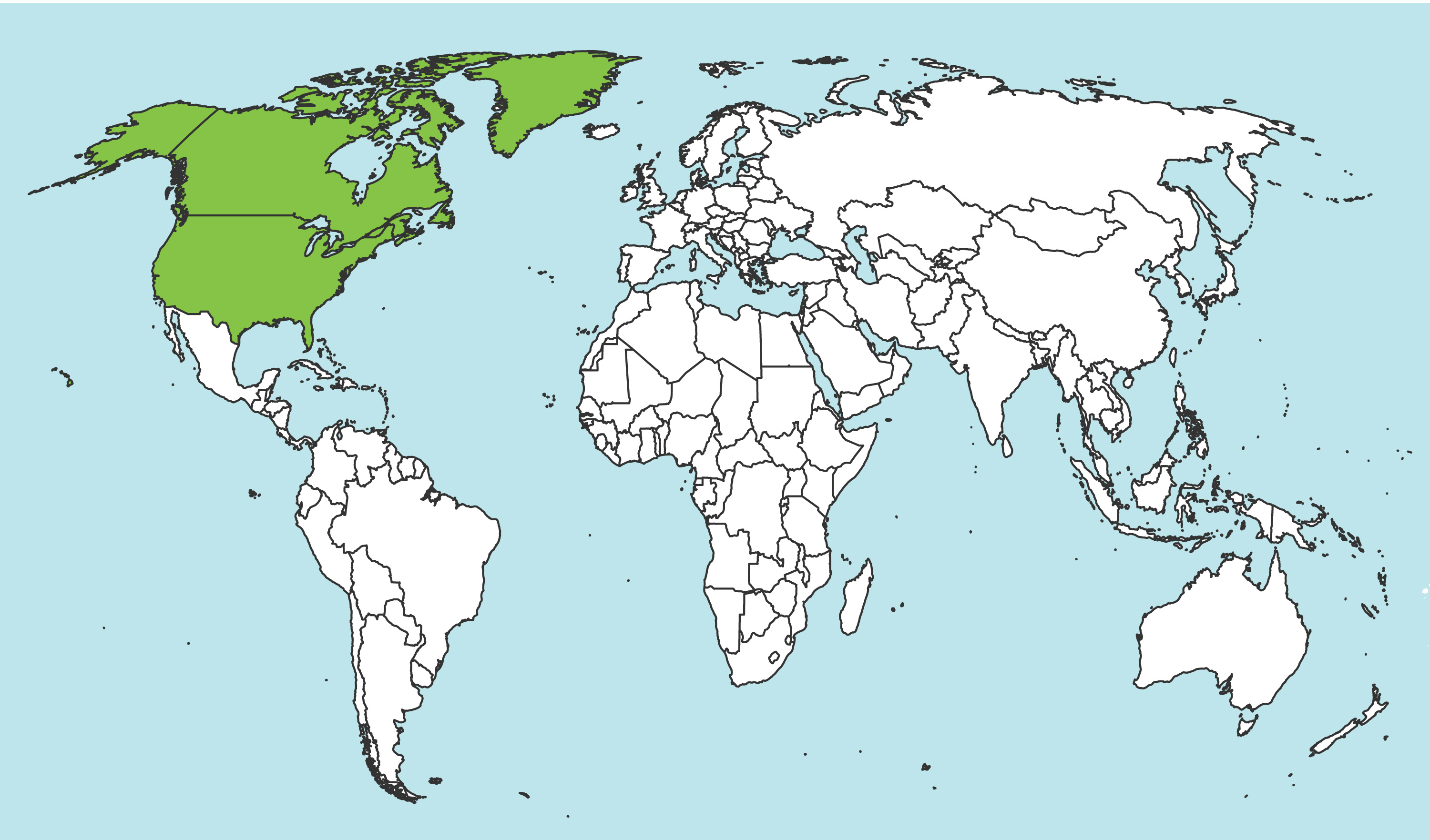 and known only from southern California (Blank et al. 2010bBlank et al. 2010b:
and known only from southern California (Blank et al. 2010bBlank et al. 2010b:
Blank SM, Vilhelmsen L, and Smith DR. 2010b. Ophrynon (Hymenoptera: Orussidae) in California: diversity, distribution, and phylogeny. Insect Systematics amp; Evolution 41: 3-27. https://doi.org/10.1163/139956009X12550095535756).
A key to North American species of Ophrynon is included in Blank et al. 2010bBlank et al. 2010b:
Blank SM, Vilhelmsen L, and Smith DR. 2010b. Ophrynon (Hymenoptera: Orussidae) in California: diversity, distribution, and phylogeny. Insect Systematics amp; Evolution 41: 3-27. https://doi.org/10.1163/139956009X12550095535756.
 (Middlekauff 1983Middlekauff 1983:
(Middlekauff 1983Middlekauff 1983: longer than body length and thread-like; when withdrawn, ovipositorovipositor:
longer than body length and thread-like; when withdrawn, ovipositorovipositor: hidden inside the body, sometimes coiled (Middlekauff 1983Middlekauff 1983:
hidden inside the body, sometimes coiled (Middlekauff 1983Middlekauff 1983: ; distaldistal:
; distaldistal: present extending along entire outer side of compound eye down to antennal socket (Middlekauff 1983Middlekauff 1983:
present extending along entire outer side of compound eye down to antennal socket (Middlekauff 1983Middlekauff 1983: on face between the compound eyes and below coronal crest present (Middlekauff 1983Middlekauff 1983:
on face between the compound eyes and below coronal crest present (Middlekauff 1983Middlekauff 1983: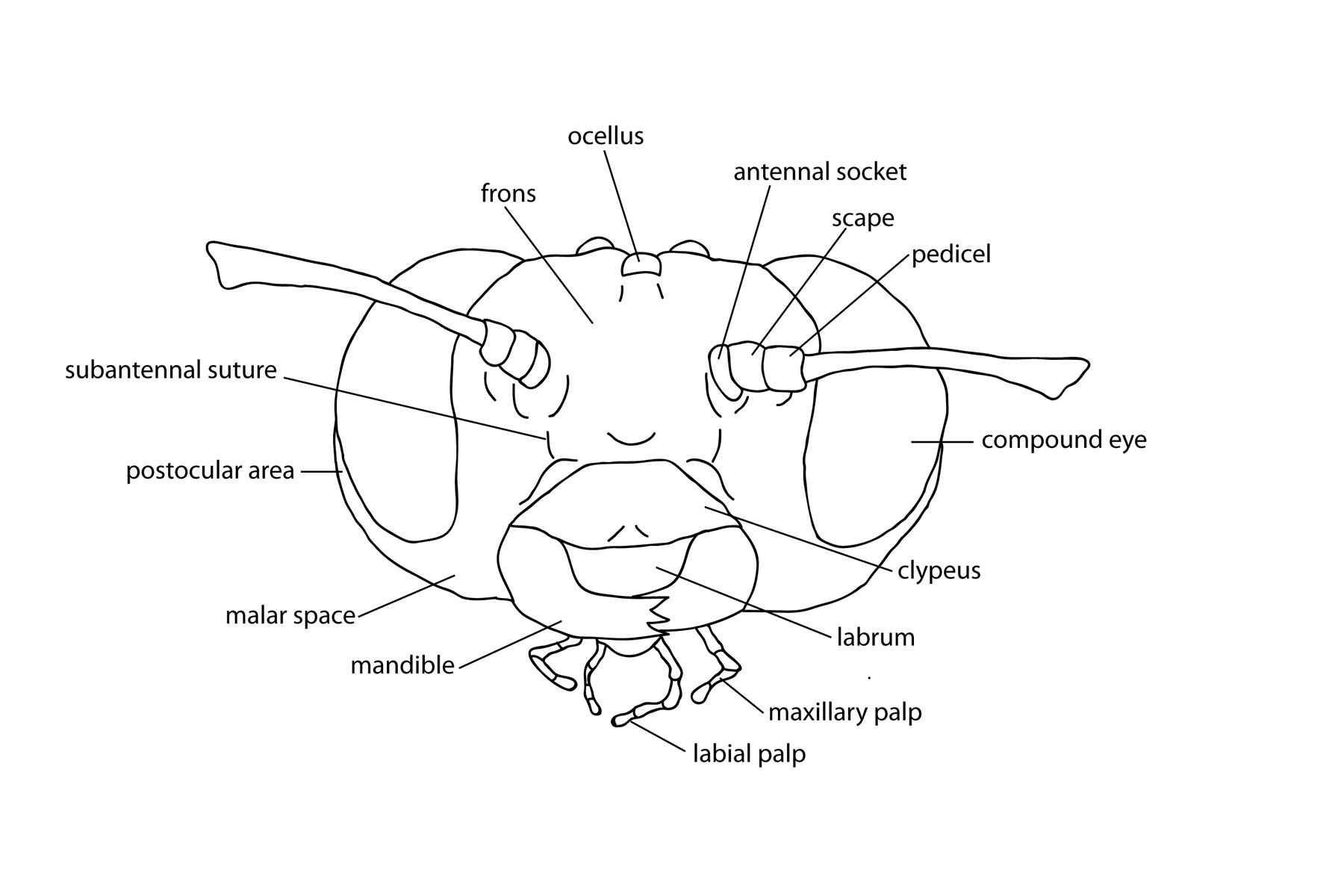 five-segmented and elongate (Middlekauff 1983Middlekauff 1983:
five-segmented and elongate (Middlekauff 1983Middlekauff 1983: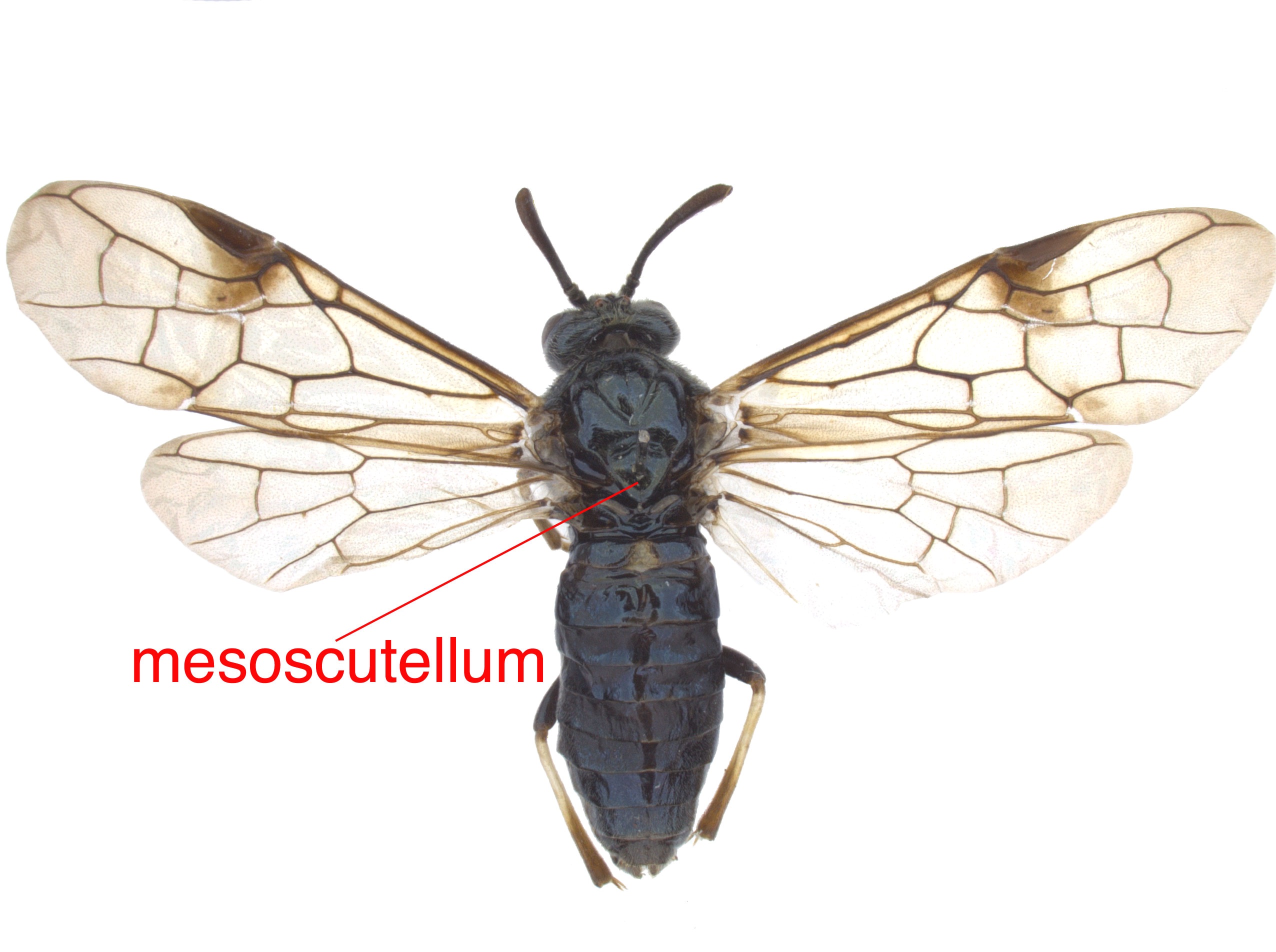 raised laterally and rounded apically (Blank et al. 2010bBlank et al. 2010b:
raised laterally and rounded apically (Blank et al. 2010bBlank et al. 2010b: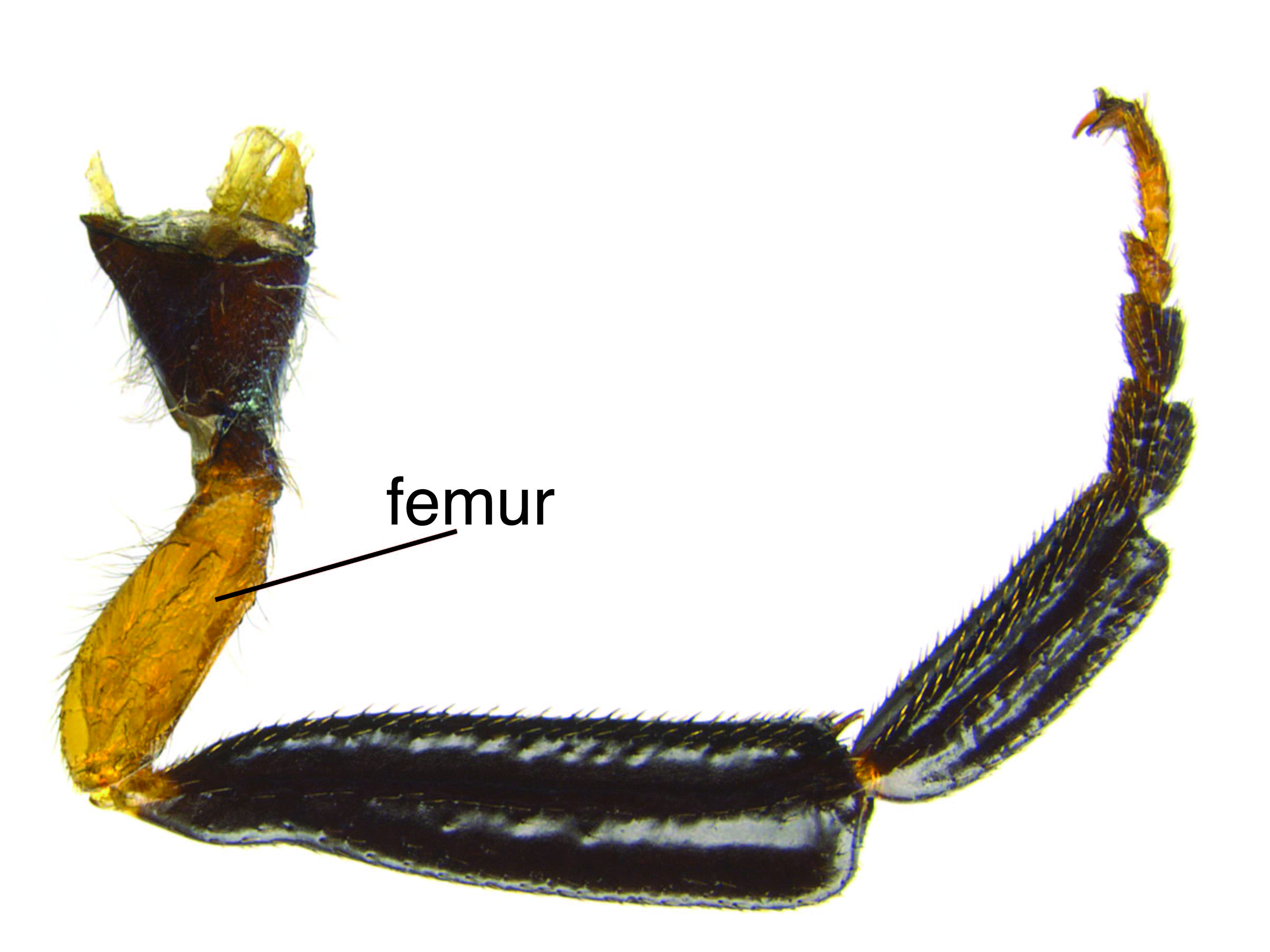 with a triangular projection laterodistally (Blank et al. 2010bBlank et al. 2010b:
with a triangular projection laterodistally (Blank et al. 2010bBlank et al. 2010b:Orussidae are morphologically distinct among sawfly families because of the body shape and location of antennaeantenna:
the sensory organ emerging from the front of the head, usually between the compound eyes and above the clypeus; includes the flagellum, scape and pedicel
 on head. Ophrynon, however, is easily confused with other genera of the family. It can be distinguished by the presence of longitudinal carinaecarina:
on head. Ophrynon, however, is easily confused with other genera of the family. It can be distinguished by the presence of longitudinal carinaecarina:
a ridge or raised edge
 between the eyes and the distinct shape of the mesoscutellummesoscutellum:
between the eyes and the distinct shape of the mesoscutellummesoscutellum:
the anterior section of the scutellum
 and the maxillary palpimaxillary palpus:
and the maxillary palpimaxillary palpus:
appendage emerging laterally from the maxilla; often segmented
 (Middlekauff 1983Middlekauff 1983:
(Middlekauff 1983Middlekauff 1983:
Middlekauff WW. 1983. A revision of the sawfly family Orussidae for North and Central America (Hymenoptera: Symphyta, Orussidae). University of California Publications in Entomology 101: 1-46.).
none
The Orussidae are external parasitoids of other insects. The hosts for species of Ophrynon are unknown, but are presumed to be beetles of the family Buprestidae because of the biology of other orrusids and the geographic range of potential hosts. One Ophrynon levigatus was reared from a sample of Quercus dumosa (scrub oak) in which was also living several species of Buprestidae: Acmaeodera knullorum, A. linsleyi, A. vulturei, Acmaeoderopsis guttifera, and Hesperorhipis jacumbae. Blank et al. (2010b) theorized that of these, the species of Acmaeodera are most likely the preferred host, because of larval body size.
Biology of Ophrynon species is unknown as only 10 adult specimens have been collected and/or observed (Blank et al. 2010bBlank et al. 2010b:
Blank SM, Vilhelmsen L, and Smith DR. 2010b. Ophrynon (Hymenoptera: Orussidae) in California: diversity, distribution, and phylogeny. Insect Systematics amp; Evolution 41: 3-27. https://doi.org/10.1163/139956009X12550095535756). For a description of the life history of a closely related sawfly in the Orussidae, see Orussus.
World: No species are documented outside of North America (Blank et al. 2010bBlank et al. 2010b:
Blank SM, Vilhelmsen L, and Smith DR. 2010b. Ophrynon (Hymenoptera: Orussidae) in California: diversity, distribution, and phylogeny. Insect Systematics amp; Evolution 41: 3-27. https://doi.org/10.1163/139956009X12550095535756).
North America: Ophrynon has only been recorded from southern California. The four species range from Fresno County south to Riverside County, an area characterized by arid steppe and dry coniferousconiferous:
describing a conifer
forest (Blank et al. 2010bBlank et al. 2010b:
Blank SM, Vilhelmsen L, and Smith DR. 2010b. Ophrynon (Hymenoptera: Orussidae) in California: diversity, distribution, and phylogeny. Insect Systematics amp; Evolution 41: 3-27. https://doi.org/10.1163/139956009X12550095535756).
Map data from the Smithsonian National Museum of Natural History (USNM)
Details about data used for maps can be found here.